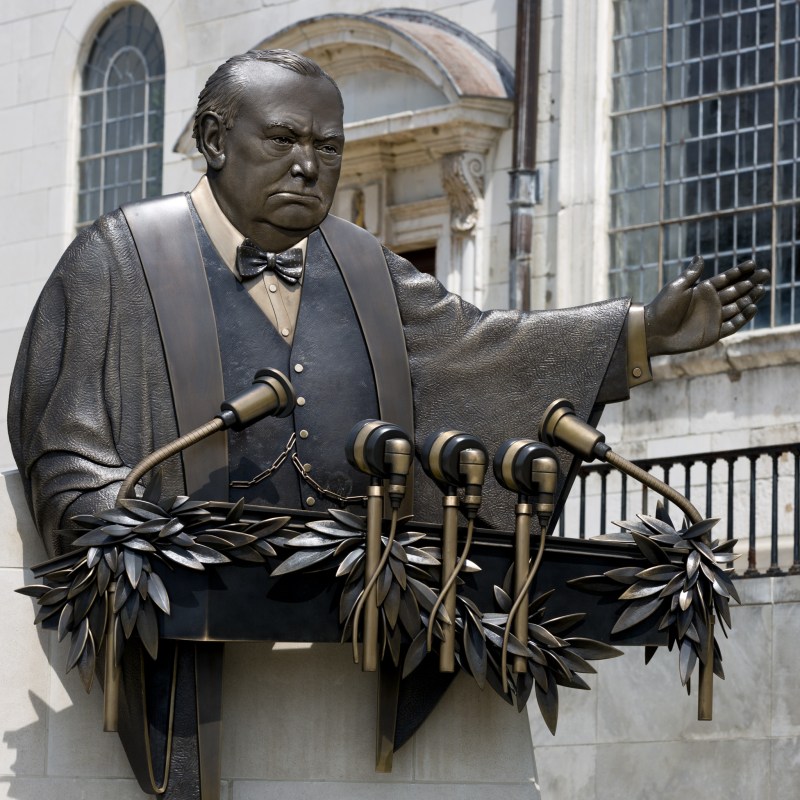
I served in the United States Air Force for more than eight years, so I’ve had the opportunity to see many parts of the world. I spent time in Germany (at the time, it was West Germany) and North Dakota. I loved both assignments. They each offered unique experiences, but they also presented challenges.
Videos by TravelAwaits
I served during the Cold War, when the United States and the Soviet Union were mortal enemies, each with nuclear missiles pointed at the other. It was a different time: We went about our business, but always with nuclear war as an underlying threat. Then, in 1989, the Berlin Wall came crashing down, and the Soviet Union and its Eastern Bloc allies (including East Germany and Poland) collapsed, ending the run of communism in Eastern Europe.
Today, the Cold War story — the story of the longest war in American history — is told at unique museums around the country, such as the Strategic Air Command & Aerospace Museum near Omaha and Westminster College in Fulton, Missouri, where Winston Churchill delivered a dramatic speech about the dangers of the Cold War.
Here are just a few places in the Midwest where you can learn more about this important time in our country’s history.

Tim Trudell
1. Ronald Reagan Minuteman Missile State Historic Site
Cooperstown, North Dakota
Two North Dakota military bases were assigned duties during the Cold War. The Grand Forks Air Force Base served numerous functions, while the Minot Air Force Base stored missiles. The Grand Forks missile field, which consisted of 15 launch sites with 10 missile silos each, ran the length of New Jersey — all the way from the Canadian border to just north of Valley City, North Dakota.
After the Cold War, the federal government sold most of these sites, but it kept one launch site (the Oscar Zero Launch Control Center), and one missile silo (the November 33 Missile Facility) to serve as historic attractions. These sites, now known as the Ronald Reagan Minuteman Missile State Historic Site, are located near the small town of Cooperstown, North Dakota, about 90 minutes southwest of Grand Forks.
I worked as a security controller at this location during my assignment. Responsible for controlling access to the sites and supervising the security patrols, I was part of a six-person team working 12-hour shifts. As you tour the facility, you’ll see the security office, as well as the living quarters and lounge area where the staff members (including a cook and facility manager) would relax during their downtime. Two launch officers worked 24-hour shifts several feet below ground in a secured bunker. They were responsible for launching missiles during war, and their bunker is the spot visitors are most curious to see. At the time, it was a secured area with restricted access. While the panels and lights might not seem exciting, they once served a very important purpose.
After touring the launch control center, you can visit the nearby missile silo. Visitors are even allowed to walk around the top of the silo! But don’t worry — the actual missile tube has been filled in with concrete.

Tim Trudell
2. Harry S. Truman Presidential Library And Museum
Independence, Missouri
President Harry S. Truman ended World War II by approving the detonation of two hydrogen bombs over Japanese cities. This ushered in a nuclear era for the world. Following the war, Germany was split in two, with West Germany considered a free country and East Germany part of the Eastern Bloc, controlled by the Soviet Union. Berlin, while located in East Germany, was itself split in two: The west side of the city was controlled by the United States, and the east side by the Soviets.
In 1948, the Soviets blocked entry into West Berlin in an effort to force the Allies to surrender the city. But President Truman organized an airlift to provide food and supplies to the city’s residents over a 15-month period, thus saving West Berlin in what was likely the first true conflict of the Cold War. In 1961, the Berlin Wall was built to separate East Berlin from West Berlin. It would remain there for 38 long years.
The Harry S. Truman Presidential Library and Museum in Independence, Missouri, provides an excellent exhibit on the Cold War and the Berlin Airlift.

Tim Trudell
3. Westminster College
Fulton, Missouri
Invited to speak at Westminster College in the small town of Fulton, Missouri, former British Prime Minister Winston Churchill asked President Truman to join him. During his visit in 1946, Churchill delivered an iconic speech in which he coined the term “Iron Curtain” to describe the Soviet Union’s ultimate plans to expand its role as the leader of the Eastern Bloc.
Today, the National Churchill Museum is located inside the church where he spoke. Open daily, the museum offers visitors a look at Churchill’s life, including his military career during World War I. The museum also features exhibits on life behind the Iron Curtain. A section of the Berlin Wall is located outside the church, along with a statue of Churchill delivering his speech.

Tim Trudell
4. Strategic Air Command & Aerospace Museum
Ashland, Nebraska
Located about 20 miles west of Omaha, the Strategic Air Command & Aerospace Museum near Ashland, Nebraska, celebrates the history of the nuclear-age military organization. From 1948 until its 1991 decommission, the Strategic Air Command (SAC) served as the nation’s primary strategic defense.
While several movies have been made about the organization, visiting the museum, which celebrates the legacy of the command, is special. There are more than 30 aircraft and missiles on display, and military and history buffs will enjoy seeing planes such as the Rockwell B-1 Lancer and the Lockheed SR-71 Blackbird reconnaissance at the entrance.
Those aren’t the only planes you’ll see. The museum is home to one of the largest collections of aircraft from the Cold War era, and you’ll find yourself in awe of the Boeing B-52 Stratofortress, also known as the BUFF (You’ll need to ask a docent about its full name. Spoiler alert: It’s not G-rated.); the McDonnell Douglas F-4 Phantom II; the General Dynamics F-111 Aardvark; the Lockheed U-2; and more. The museum’s collection includes a Soviet Mikoyan MiG-29, which was once recognized by a former Soviet military officer (or so I’ve been told).
The museum is also home to other artifacts and memorabilia related to the SAC era, including an exhibit honoring General Curtis E. LeMay, the father of the SAC. Other exhibits include World War II aircraft and capsules used by the American space program.

5. National Museum Of The United States Air Force
Dayton, Ohio
It would be easy to spend more than a day at the National Museum of the United States Air Force in Dayton, Ohio — there are more than 360 aircraft and missiles on display. With exhibits in four large hangars, the museum is the largest aviation museum in the world, but it’s easy to navigate. You’ll learn about the Air Force and its more than 70 years of serving the country, from the early days of flight to the present day.
Visitors can also learn about the Air Force’s role in the Cold War. The Cold War gallery features more than 120 aircraft, weapons, and exhibits, including a Convair B-58 Hustler and a General Dynamics F-16 Fighting Falcon cockpit, as well as displays on the SAC and the Berlin Wall.
The museum is open daily except on Thanksgiving, Christmas, and New Year’s, and it stays open until 8 p.m. on the first Thursday of each month.
When most people think of military museums, they think of ones related to World War I or World War II. Much of the 20th century focused on the Cold War, however, and its stories are being told at museums across the Midwest. If you have a military or history enthusiast in your family, they’ll appreciate visiting these sites.
